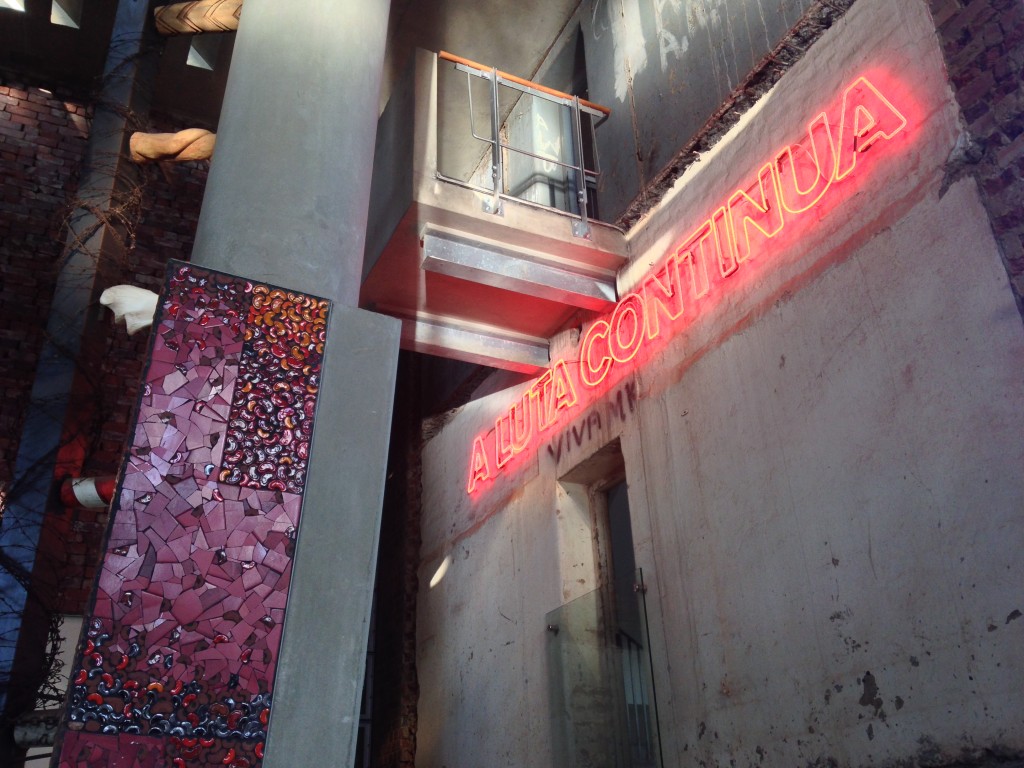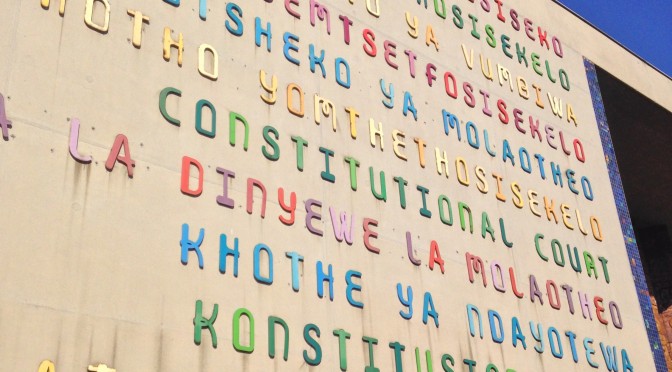After our idyllic stay in Vilankulo, we flew to Johannesburg, South Africa.
To be honest, I wasn’t that amped about visiting Jo’burg. It has something of a rough reputation. As someone who lived in New York for five years and Chicago (which has more than its share of gun violence) for three years before that, however, I always take breathless warnings about big city crime with a grain of salt. I’ve found that if you are smart about where you are going, discrete with your valuables, and aware of your surroundings, you’re generally going to be fine.
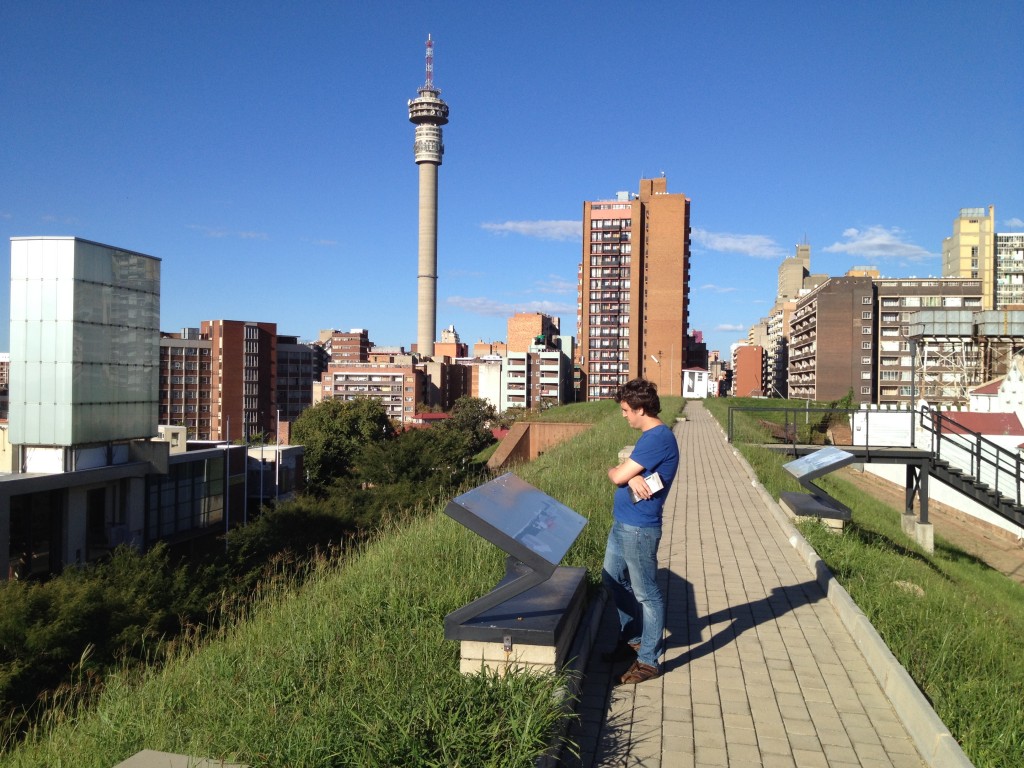
Johannesburg, however, gave me pause. Each of our guidebooks (one Lonely Planet and one Rough Guide) featured a separate section on safety in Johannesburg, and people I consider to be well-traveled (within other parts of Africa nonetheless) and non-alarmist reminded us to be careful.
But our guidebooks encouraged us not to let fear dissuade us from visiting Johannesburg, and Marc was rather intent on not just driving straight out of town from the airport. Johannesburg is undeniably an important South African city: it’s the economic center of the country, and some of the country’s most significant historical sites are located there. It’s always important to try to understand the context of countries you visit, and this (the twentieth anniversary of South Africa’s first free elections and the month before the country’s next national election) is a particularly apt time to learn about South Africa’s history.
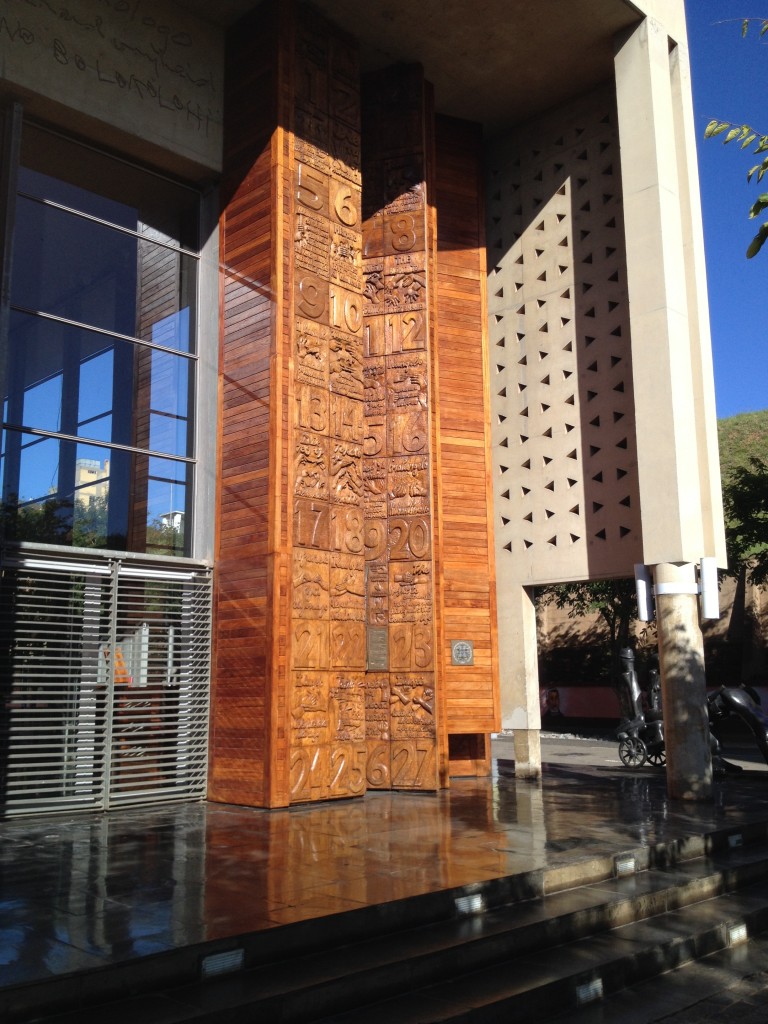
Downtown Johannesburg
Over breakfast at our guesthouse, we chatted with a pair of German tourists who were at the tail end of their two-week trip to South Africa, having driven along the Garden Route from Cape Town (basically what we intend to do later in April, but in reverse), and were planning on using the double-decker hop-on/hop-off bus to explore Johannesburg. We briefly entertained the idea, as there seemed to be some merits to the approach (namely, you could travel large distances over a short amount of time and didn’t have to worry about traveling through less desirable areas of town), but found ourselves cringing at the idea of being hop-on/hop-off tourists. Similar buses had rolled past our apartment in Manhattan no less than once every three minutes, and they also regularly cruised down our street in Brooklyn. In the end, we snagged the bus company’s map and set off on our own to explore on foot.
One of the helpful ladies working at the guesthouse showed us how to hail a public minibus taxi to the city center (raising an index finger, in what looks like the “we’re number one” sign to me), and we began exploring the downtown grid. We wandered through department and grocery stores, open air markets with fruit vendors (who, sadly, seemed to be selling bulk fruit rather than individual pieces), and the mall in the Carlton Centre (which is the tallest building in Africa). We walked through the old mining district, learning about Johannesburg’s historical ties to the mining industry, and even took a strange little elevator from the lobby of the Standard Bank building down a few floors to see the entrance to an old mine shaft that was discovered during the building’s construction.
We popped into the Musuem Africa (which looked very interesting, and is located in the city’s old fruit and vegetable market, but we were running short on time and didn’t get a chance to explore much) and wandered around the Newton area before walking on to the Mandela & Tambo Law Offices, where Nelson Mandela and Oliver Tambo set up their law practice. You can’t tour the building itself, but there is interesting information set up in the windows to assist in understanding how difficult but important it was for them to maintain their practice.
Constitution Hill
We then walked over the Mandela Bridge up to Constitution Hill, where the Constitutional Court is located. The Constitutional Court is located in an amazing building that was built using bricks from the demolished men’s prison and incorporates two stairwells from the holding building for those awaiting trial.
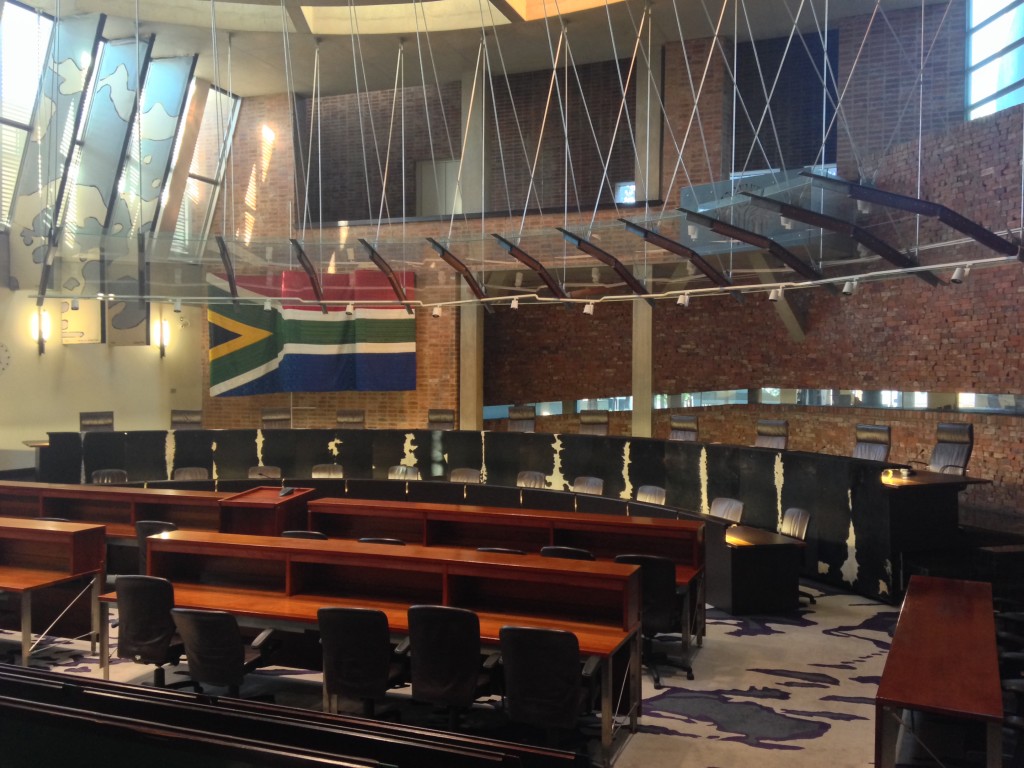
In the same complex are the remains of the other jails: the Old Fort prison complex, the women’s jail, and the Number Four prison complex, which was where the black prisoners were kept in appalling conditions. Mandela, Gandhi, and other passive resisters were held here.
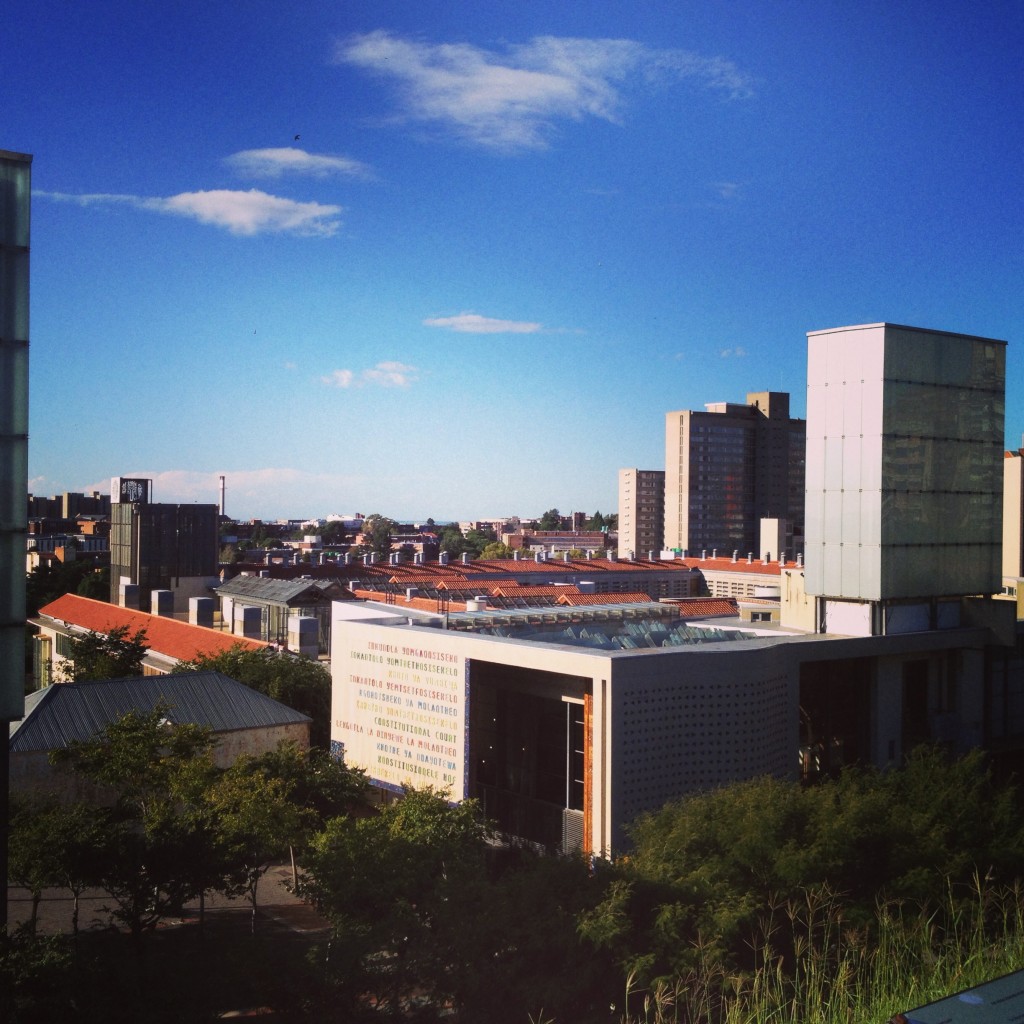
The Apartheid Museum
After we picked up the rental car on Friday afternoon from the Johannesburg train station and managed to navigate our way out of downtown, we drove to the Apartheid Museum in the southern suburbs. The museum is, in a word, staggering. It’s a very well-assembled museum, with exhibits proceeding in chronological order and detailed information plainly presented. The museum presents an incredible amount of information, but does so in a way that is not overwhelming. I walked away shaken, but much more informed than when I entered.
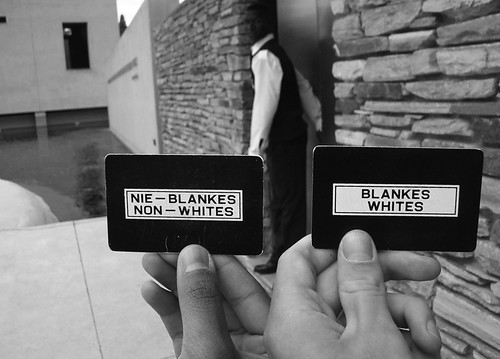
Sleeping & Eating
We stayed at a guesthouse called Life on 3rd in the suburb of Melville. Melville has a young vibe, thanks to the nearby University of Johannesburg, and there are plenty of bars and restaurants within walking distance from our guesthouse.
We arrived on a Wednesday afternoon, and the guesthouse had (for a fee) sent their driver, Big Boy, to retrieve us from the airport. We checked in and then set out to take a quick stroll around Melville before it got dark, but ended up almost immediately caught in a downpour from a fairly aggressive thunderstorm. We ducked into the first bar that we saw, a pub called The Slug & Lettuce, and ordered drinks and a plate of olives to wait out the storm. It was such a comfortable place that we ended up ordering more drinks and dinner there (a hilariously out-sized order of ribs – which were delicious – and a salad).
In fact, we enjoyed The Slug & Lettuce so much that we ate dinner there the next night as well. We met up for drink with a friend of Marc’s who was in town working on an election monitoring project relating to the upcoming national election, and, after we tried out another bar in the area, ended up heading back to The Slug & Lettuce.
Johannesburg was also the first place that we ate at Mugg & Bean, a casual dining chain that has turned out to be a staple of our South African diets. (There’s this amazing salad with roasted vegetables and feta, and the free wifi doesn’t hurt.)
